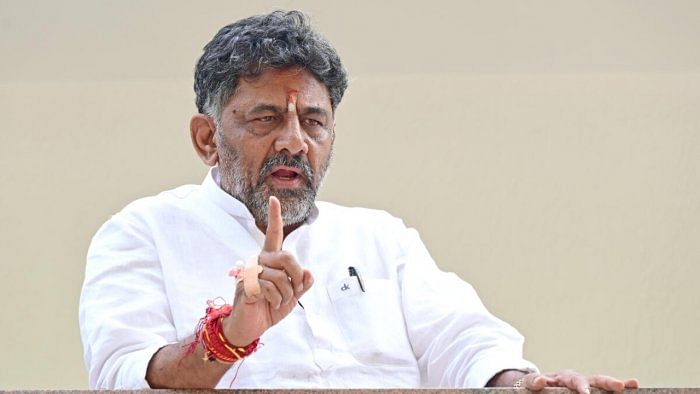
During the election campaign in Karnataka, Prime Minister Narendra Modi was throwing his weight behind the need for a “Double Engine Sarkar” to woo the voters. Though voters rejected the notion by bringing the Congress to power, now they have a ‘Double CM government’!
In the Cabinet system of governance, a Chief Minister is often considered ‘the first among equals’. Given the stature of DK Sivakumar coupled with his power as Pradesh Congress Committee chief, the question arises on whether his inclusion in the Siddaramaiah’s Cabinet as the Deputy Chief Minister with the home portfolio under him, are there ‘two first among equals’ in the Karnataka government?
Eleven of the 28 states, including Karnataka, have deputy chief ministers. While Andhra Pradesh has five deputy chief ministers, which is the highest number in India, Uttar Pradesh, Nagaland, and Meghalaya have two deputy chief ministers each. Appointing a deputy chief minister has become common practice throughout India to pacify the intra-party or inter-party conflicts of interest arising when one leader from within a faction in the ruling party or one leader from within the alliance is appointed Chief Minister.
Political circles have become too accustomed with such an arrangement to the extent that now we seldom remember that there is no constitutional sanction for the same. The controversy regarding the same came to public sphere when Devi Lal, while taking oath as Deputy Prime Minister in the VP Singh government in 1989, deliberately altered the oath as Cabinet minister administered by the then President R Venkataraman. In the book, ‘Commissions and Omissions of Indian Presidents, Venkataraman is quoted recalling the event: “I asked my secretary to convey to VP Singh that Devi Lal could be sworn in as minister and later designated as deputy PM. But when I administered the oath as ‘mantri’, he insisted on reading it as ‘upa pradhan mantri’. I corrected him saying ‘mantri’ again, but the second time, too, he read it as ‘upa pradhan mantri’. It was fully displayed in the live telecast of the proceedings, but I did not want to create an ugly scene and therefore allowed Devi Lal to continue to proceed as he wished.”
In contrast to the peaceful swearing-in ceremonies of his predecessors to the post, it attracted legal challenge before the Supreme Court in 1990, alleging that Lal had not taken oath as prescribed in the third schedule of the Constitution. Soli J Sorabjee, the then Attorney General appearing on behalf of the Union government, defended the validity of the oath by arguing that the form prescribed in the third schedule pursuant to the requirement of Article 75(4) of the Constitution is only for a Minister of the Union, and there was no separate form even for the Prime Minister. He pointed out that describing Lal as Deputy Prime Minister was ‘descriptive only’ and for all purposes, he is a minister as there is no constitutional sanction for the post of Deputy PM as such.
The apex court accepted the above contention and rejected the writ petition. Thus, though it was confirmed that the post of Deputy Prime Minister has no express constitutional backing, it attained legal sanctity thereby. The immediate outcome of the Lal episode was that the post of Deputy PM/CM managed to gain public recognition throughout India. It was Karnataka which led by example when the state saw Deputy chief ministers being appointed every now and then to manage fractured verdicts, and now it has become a post-election routine elsewhere as well.
In the current scenario, it was the Congress leadership’s call to take, and the final decision could not be faulted with as it is well within the contours of the internal affairs of the party. In fact, it was a fair political standoff between Siddaramaiah and Sivakumar which culminated in a democratic resolution. At least, the lack of pretention should be appreciated.
The question is whether the power struggle is over, or it would continue to the extent of clogging the administration in the state.
Both Siddaramaiah and Sivakumar are towering leaders in the state with definite political following. If a symmetry is maintained between the capabilities of both the leaders, then a home-made double-engine government can be cultivated by the Congress. The brighter side is that the leadership did not succumb to the blatant hue and cry along caste and communal lines for the Deputy Chief Minister post from different corners. Otherwise, it would have marred the secular aspirations of the people writ large in the election verdict, and, thus, give the communal forces a morale booster.
(Ron Bastian is a freelance writer and author.)
Disclaimer: The views expressed above are the author's own. They do not necessarily reflect the views of DH.